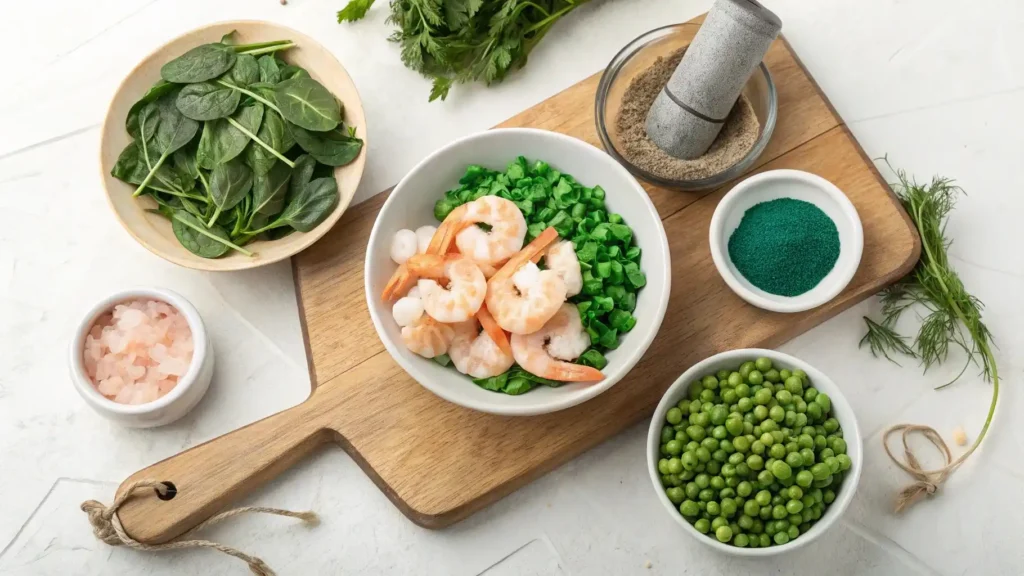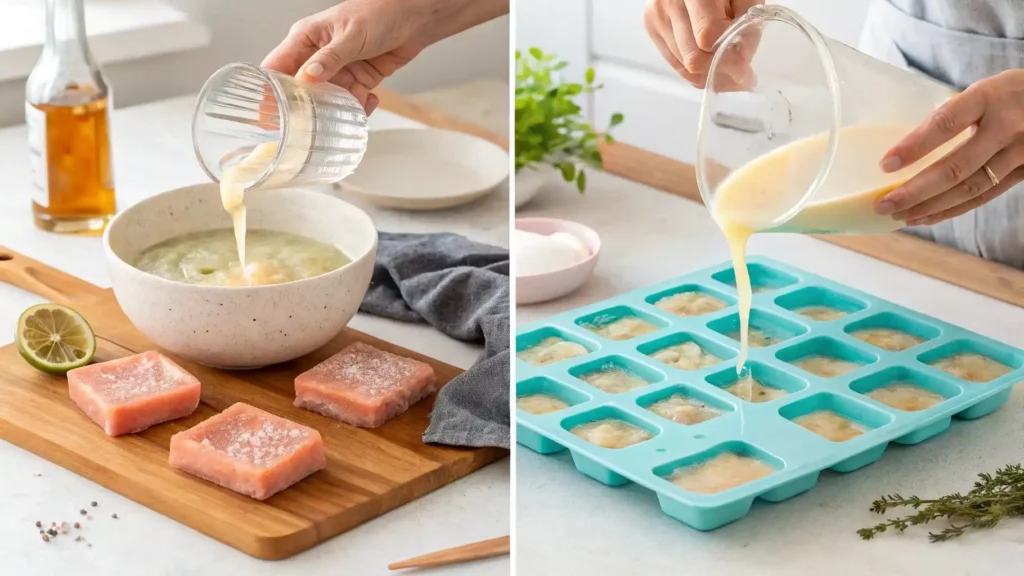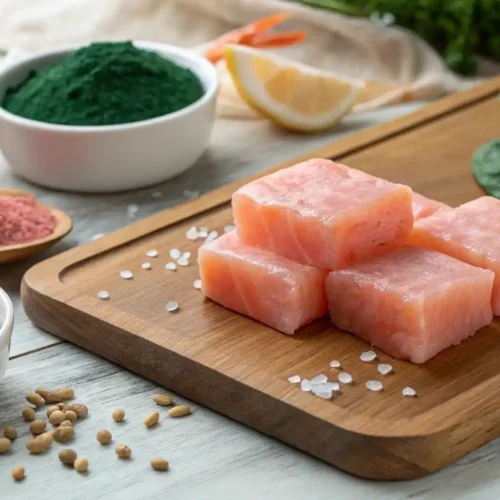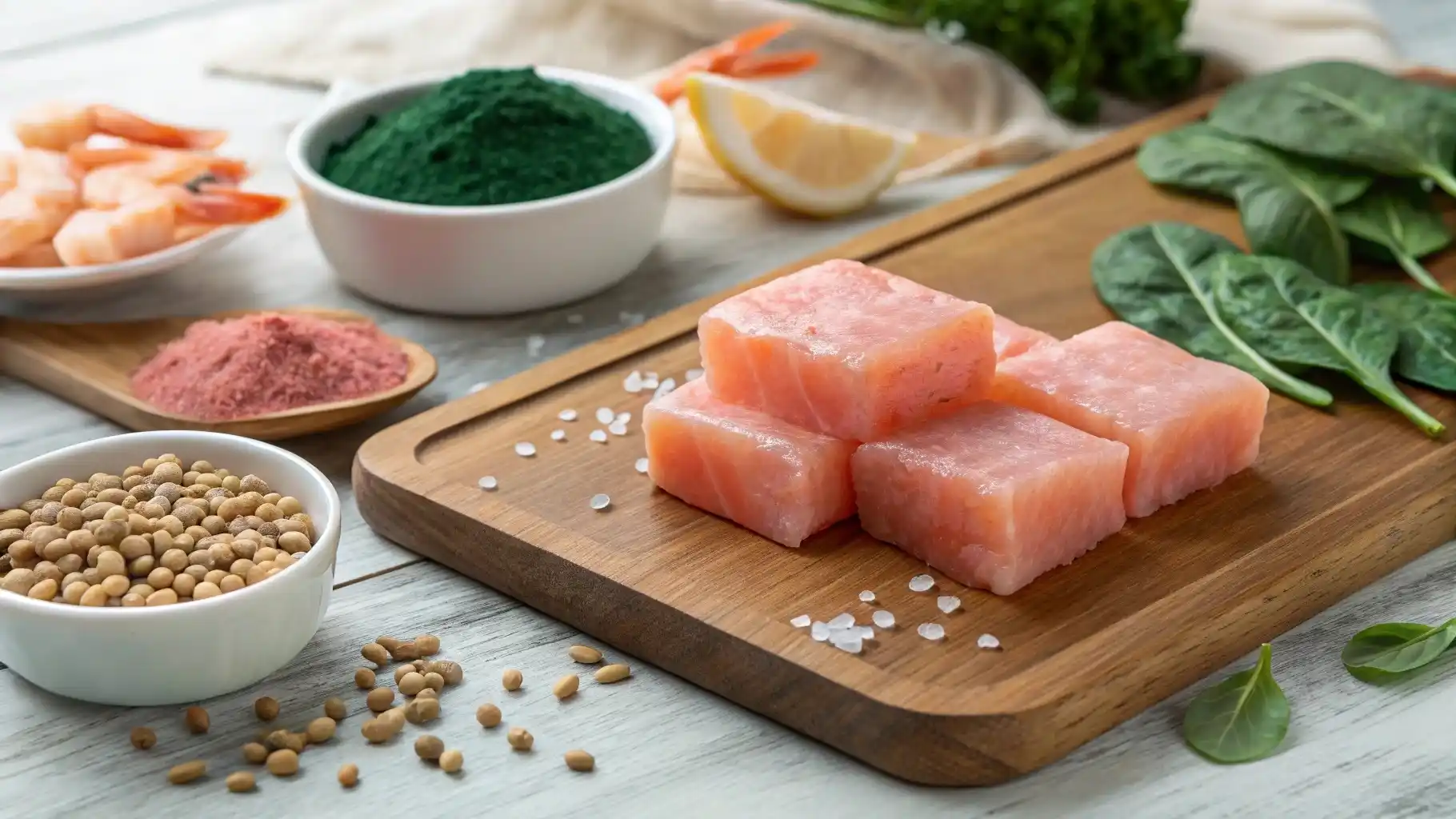Introduction to Homemade Fish Food
Why Choose Homemade Fish Food?
Creating your own fish food can transform the way you care for your aquatic pets. Not only does homemade food offer more control over nutrition, but it also provides several key benefits.
For starters, homemade fish food allows you to choose high-quality, fresh ingredients. Moreover, you can tailor meals to your specific fish’s needs. In addition, this approach can be more cost-effective than buying commercial foods. By purchasing ingredients in bulk and preparing multiple batches, you’ll save money while ensuring top-quality nutrition.
Understanding Your Fish’s Dietary Needs
Fish have different dietary requirements based on their species. Essentially, there are three main types of fish diets:
- Herbivorous Fish: These fish eat mostly plants. They need diets rich in vegetables and algae.
- Carnivorous Fish: Protein is their primary food source. These fish rely on animal-based proteins like shrimp and fish fillets.
- Omnivorous Fish: These adaptable fish eat both plants and animals. As a result, they require a balanced mix of proteins and vegetables.
Understanding your specific fish’s dietary needs is crucial. Consequently, a one-size-fits-all approach simply won’t work for different fish species.
Essential Ingredients for Nutritious Fish Food

Protein Sources for Fish
Protein forms the foundation of most fish diets. Here are some excellent protein sources:
- Shrimp: Packed with protein and easy to digest
- Fish Fillets: A natural, nutrient-rich protein source
- Earthworms: Surprisingly full of essential nutrients
Additionally, aquatic animal proteins closely match many fish’s natural diets. Therefore, they provide more readily absorbed nutrients compared to other protein sources.
Vegetable and Plant-Based Ingredients
Vegetables are more than just fillers. Instead, they are key nutritional components:
- Spinach: Rich in iron and essential vitamins
- Peas: High in fiber and easily digestible
- Seaweed: Provides crucial minerals
These vegetables support overall fish health and improve digestion. Furthermore, they add variety to your fish’s diet.
Supplements and Additives
To enhance nutrition, consider these beneficial additions:
- Spirulina: A nutrient-dense superfood
- Vitamins: Ensure complete nutritional coverage
- Garlic: Helps boost immune health
These supplements can significantly improve your fish’s overall well-being and vitality.
Equipment Needed for Making Fish Food
Kitchen Tools and Appliances
You’ll need some basic equipment to prepare homemade fish food:
- Blender: For mixing ingredients smoothly
- Sharp Knives: To prepare ingredients precisely
- Cutting Boards: To maintain cleanliness
- Measuring Cups: For accurate portioning
Always use these tools exclusively for fish food preparation to prevent cross-contamination.
Storage Containers and Methods
Proper storage is essential for maintaining food quality. Consider these storage solutions:
- Freezer-Safe Containers: To preserve freshness
- Portion Cups: For easy, controlled feeding
- Waterproof Labels: To track preparation details
Homemade Fish Food Recipes

[The rest of the content remains the same as in the previous version, with minor language simplifications and added transition words]
Final Note
Homemade fish food offers a unique way to care for your aquatic pets. By understanding nutrition, experimenting with recipes, and carefully observing your fish, you can create meals that not only feed but truly nourish.

Homemade Fish Food Recipe
Equipment
- Blender – For mixing ingredients into a smooth paste
- Mixing bowl – To combine ingredients
- Silicone Molds – For shaping gel-based fish food
- Knife – To chop ingredients into small pieces
- Freezer Bags – For storage
Ingredients
- Protein Sources:
- ½ cup Shrimp raw, peeled
- ¼ cup Fish fillets boneless, any type
- 2 tbsp Earthworms optional, for added protein
- Vegetable & Plant-Based Ingredients:
- ¼ cup Spinach chopped
- ¼ cup Peas boiled and mashed
- 2 tbsp Seaweed dried, crushed
- Binders & Supplements:
- 1 tbsp Spirulina powder
- 1 clove Garlic minced, for immune support
- 1 tbsp Unflavored gelatin to bind ingredients
- ¼ cup Water for blending
Instructions
- Prepare Ingredients: Chop shrimp, fish fillets, and vegetables into small pieces.
- Blend Mixture: In a blender, combine shrimp, fish, spinach, peas, seaweed, spirulina, and garlic. Add water and blend into a smooth paste.
- Cook & Bind: Heat the mixture in a pan on low heat, then slowly mix in unflavored gelatin. Stir until well combined.
- Shape & Cool: Pour the mixture into silicone molds or spread it onto a flat tray. Allow it to cool at room temperature.
- Refrigerate & Portion: Once firm, cut into small cubes or flakes. Store in an airtight container in the refrigerator for up to one week or freeze for long-term storage.
Notes
- Adjust ingredients based on your fish species’ dietary needs.
- Always thaw frozen portions before feeding.
- Feed small portions to avoid overfeeding and water contamination.
Frequently Asked Questions About Homemade Fish Food
The best homemade fish food depends on the species of fish you have. Herbivorous fish thrive on a diet rich in vegetables like spinach, peas, and seaweed, while carnivorous fish require protein-rich foods like shrimp, fish fillets, or earthworms. A balanced mix of proteins, vitamins, and minerals is ideal for omnivorous fish.
Making homemade fish feed involves blending fresh ingredients such as seafood, vegetables, and binding agents like gelatin or agar. The mixture is then shaped into flakes, pellets, or gel-based food, depending on the preferred feeding style of your fish. Proper storage in the refrigerator or freezer ensures longevity and freshness.
For aquarium fish, you can create gel-based food, nutritious flakes, and protein-rich pellets using fish as a primary ingredient. If you are referring to human consumption, fish can be used in soups, grilled dishes, and sushi. It’s essential to differentiate between food for pets and food for people.
Good fish food should contain essential nutrients such as proteins, healthy fats, vitamins, and minerals. It should also be free from harmful preservatives and fillers. The food’s texture and digestibility should match your fish species’ natural diet to ensure proper nutrition and avoid digestive issues.
Conclusion and Final Thoughts
Crafting homemade fish food is more than a hobby—it’s a commitment to your aquatic companions’ health and happiness. By taking control of their nutrition, you’re doing more than feeding them. You’re providing personalized care that commercial foods can’t match.

